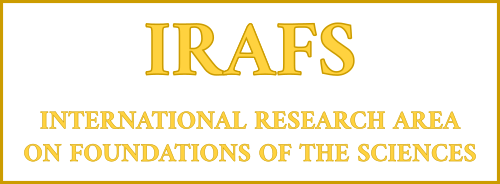 |
|
| Universidad Popular Autónoma del Estado de Puebla (Puebla, Mexico) | |
Overview
Basti’s Seminar Slides
Basti’s Lecture Slides
Seminar Slides and Relative Bibliography
Slides
Philosophy & Computer Science. A New Mission, and New Job Opportunities for Philosophers
Bibliography
Main Documents
Basti G. (2017). The Philosophy & Computer Science Study Program. A Project (document)
Basti G. (2017). An Educational Challenge for Christians (document)
References
Abramsky, S. (2005). A Cook’s Tour of the Finitary Non-Well-Founded Sets (original lecture: 1988). In S. Artemov, H. Barringer, A. d’Avila, L. C. Lamb, & J. Woods (Eds.), Essays in honor of Dov Gabbay. Vol. I (pp. 1-18). London: Imperial College Pubblications.
Abramsky, S., & Tzevelekos, N. (2011). Introduction to categories and categorical logic. In B. Coecke (Ed.), New structures for physics. Lecture Notes in Physics, vol. 813 (pp. 3-94). Berlin-New York: Springer.
Aczel, P. (1988). Non-Wellfounded Sets. CLSI Lecture Notes, vol.14.
Aczel, P., & Mendler, N. P. (1989). A Final Coalgebra Theorem. Category Theory and Computer Science. 389 , pp. 357-365. London, UK: Springer.
Basti, G. (2001). Intentionality and Foundations of Logic: a New Approach to Neurocomputation. In T. Kitamura (Ed.), What should be computed to understand and model brain function? From robotics, soft computing, biology and neuroscience to cognitive philosophy (pp. 231-288). Singapore – New York: World Publishing.
Basti, G. (2012). Dualità, epigenesi, intenzionalità: dal mente-corpo al persona-corpo. Divus Thomas, 115(1), 29-89.
Basti, G. (2013). A change of paradigm in cognitive neurosciences Comment on: “Dissipation of ‘dark energy’ by cortex in knowledge retrieval” by Capolupo, Freeman and Vitiello. Physics of life reviews, 5(10), 97-98.
Basti, G. (2014). L’ontologia formale del “realismo naturale”, cosmologia evolutiva e partecipazione dell’essere. Divus Thomas, 117(2), 229-334.
Basti, G., & Perrone, A. L. (1995). Chaotic neural nets, computability, undecidability. An outlook of computational dynamics. International Journal of Intelligent Systems, 10, 41-69.
Basti, G., Capolupo, A., & Vitiello, G. (2016). Quantum field theory and coalgebraic logic in theoretical computer science. Retrieved from arXiv:1701.00527v1 [quant-ph]: https://arxiv.org/abs/1701.00527v1.
Blackburn, P., De Rijke, M., & Venema, Y. (2002). Modal logic. Cambridge tracts in theoretical computer science. Cambridge, UK: Cambridge UP.
Blasone, M., Jizba, P., & Vitiello, G. (2011). Quantum field theory and its macroscopic manifestations. Boson condensation, ordered patterns and topological defects. London: Imperial College Press.
Burgess, J. P. (2009). Philosophical logic (Princeton foundations of contemporary philosophy). Princeton NJ: Princeton UP.
Capolupo, A., Freeman, W. J., & Vitiello, G. (2013). Dissipation of dark energy by cortex in knowledge retrieval. Physics of life reviews, 1, 85-94.
Carnap, R. (1936). Testability and meaning. Philosophy of science, 3(4), 420-470.
Cresswell, M. J., & Huges, G. E. (1996). A new introduction to modal Logic. London: Routledge.
Fodor, J. A. (1980). Metodological solipsism considered as a resarch strategy in cognitive psychology. Behavioral and brain sciences, 3(1), 63-73.
Freeman, W. J. (2001). How brains make up their minds. New York: Columbia UP.
Freeman, W. J. (2008). Nonlinear dynamics and the intention of Aquinas. Mind and Matter, 6(2), 207-234.
Freeman, W. J., & Vitiello, G. (2008). Dissipation and spontaneous symmetry breaking in brain dynamics. Journal of Physics A: Mathematical and Theoretical, 41(30), 304042. doi:10.1088/1751-8113/41/30/304042
Freeman, W. J., & Vitiello, G. (2009). Dissipative neurodynamics in perception forms cortical patterns that are stabilized by vortices. J. Physics Conf Series, 174(012011), 1-25.
Galvan, S. (1991). Logiche intensionali. Sistemi proposizionali di logica modale, deontica, epistemica. Milano: Franco Angeli.
Goranko, V., & Otto, M. (2007). Model theory of modal logic. In P. Blackburn, F. J. van Benthem, & F. Wolter (Eds.), Handbook of Modal Logic (pp. 252-331). Amsterdam: Elsevier.
Horrocks, I. (2010a). Description Logic: A Formal Foundation for Ontology Languages and Tools. Part I Languages. Retrieved February 10, 2017, from Seminars of Information System Group at Oxford University Computing Laboratory: http://www.cs.ox.ac.uk/people/ian.horrocks/Seminars/download/Horrocks_Ian_pt1.pdf
Horrocks, I. (2010b). Description Logic: A Formal Foundation for Ontology Languages and Tools. Part II Tools. Retrieved February 10, 2017, from Seminars of Information System Group at Oxford University Computing Laboratory: http://www.cs.ox.ac.uk/people/ian.horrocks/Seminars/download/Horrocks_Ian_pt2.pdf
Kripke, S. A. (1963). Semantical analysis of modal logic I. Normal modal propositional logic calculi. Zeitschrift für Mathematische Logik und Grundlagen der Mathematik, 9:, 9, 67–96.
Kripke, S. A. (1965). Semantical analysis of modal logic II. Non-normal modal propositional calculi. In J. W. Addison, L. Henkin, & A. Tarski (Eds.), The Theory of Models (pp. 206-220). Amsterdam: North-Holland.
Lewis, C. I. (1912). Implication and the Algebra of Logic. Mind, 21, 522–531.
Lewis, C. I. (1914). The Calculus of Strict Implication. Mind, 23, 240–247.
Putnam, H. (1975). The meaning of ‘meaning’. In Philosophical papers II: mind, language and reality (pp. 215-271). Cambridge MA: Cambridge UP.
Putnam, H. (1988). Representation and reality. Camridge MA: MIT Press.
Quine, W. V. (1980). From a Logical Point of View: Nine Logico-Philosophical Essays, Second Revised Edition. Cambridge MA: Harvard UP.
Rutten, J. J. (2000). Universal coalgebra: a theory of systems. Theoretical computer science, 249(1), 3-80.
Sangiorgi , D. (2012). Origins of bisimulation and coinduction. In D. Sangiorgi, & J. Rutten (Eds.), Advanced topics in bisimulation and coinduction (pp. 1-37). Cambridge, UK: Cambridge UP.
Sangiorgi, D., & Rutten, J. (Eds.). (2012). Advanced topics in bisimulation and coinduction. New York: Cambridge UP.
Searle, J. R. (1980). Mind, brains and programs. A debate on artificial intelligence. The Behavioral and Brain Science, 3, 128-135.
Stone, M. H. (1936). The theory of representation for Boolean algebras. Transactions of the American Mathematical Society, 40, 37-111.
Thomason, S. K. (1975). Reduction of second-order logic to modal logic. Mathematical Logic Quarterly, 21(1), 107-114.
Turing, A. M. (1950). Computing machinery and intelligence. Mind, 59, 433-460.
Van Benthem, J. (1976). Modal Correspondence Theory. PhD thesis, Dept. of Mathematics. Amsterdam: Amsterdam UP.
Van Benthem, J. (1984). Correspondence theory. In D. Gabbay, & F. Guenthner (Eds.), Handbook of Philosophical Logic: Vol 2 (pp. 167-247). Dordrecht: Reidel.
Venema, Y. (2007). Algebras and co-algebras. In P. Blackburn, F. J. van Benthem, & F. Wolter (Eds.), Handbook of modal logic (pp. 331-426). Amsterdam, North Holland: Elsevier.
Von Neumann, J. (1955). Mathematical foundations of quantum mechanics. Princeton, NJ: Princeton UP.
Lecture Slides and Relative Bibliography
Slides
The AI Challenge in Cognitive Neurosciences. The Emerging Dual Ontology of Mind
Bibliography
Abramsky, S. (2005). A Cook’s Tour of the Finitary Non-Well-Founded Sets (original lecture: 1988). In S. Artemov, H. Barringer, A. d’Avila, L. C. Lamb, & J. Woods (Eds.), Essays in honor of Dov Gabbay. Vol. I (pp. 1-18). London: Imperial College Pubblications.
Abramsky, S. (2013). Coalgebras, Chu Spaces, and Representations of Physical Systems. J. Phil. Log., 42(3), 551-574.
Basti, G. (2001). Intentionality and Foundations of Logic: a New Approach to Neurocomputation. In T. Kitamura (Ed.), What should be computed to understand and model brain function? From robotics, soft computing, biology and neuroscience to cognitive philosophy (pp. 231-288). Singapore – New York: World Publishing.
Basti, G. (2008). Filosofia dell’uomo. Bologna: Edizioni Studio Domenicano (3^ Edizione).
Basti, G. (2009). Logica della scoperta e paradigma intenzionale nelle scienze cognitive. In T. Carere-Comes (Ed.), Quale scienza per la psicoterapia? Atti del III Congresso nazionale della SEPI (Society for the Exploration of Psychotherapy Integration), Roma 14-19,4,2008 (pp. 183-216). Firenze: Florence Art Editions.
Basti, G. (2011). Ontologia formale. Tommaso d’Aquino ed Edith Stein. In A. Ales-Bello, F. Alfieri, & M. Shahid (Eds.), Edith Stein, Hedwig Conrad-Martius, Gerda Walter. Fenomenologia della persona, della vita e della comunità (pp. 107-388). Bari: Laterza.
Basti, G. (2017a). From formal logic to formal ontology. In F. M. Bertato (Ed.), Proceedings of 1st CLE Colloquium for Philosophy and History of Formal Sciences, Campinas, 21-23 March 2013 (p. In Press). Campinas-Rome: Campinas UP.
Basti, G. (2017b). From formal logic to formal ontology. The new dual paradigm in natural sciences. Analecta Husserliana. Vol. CXXI: “New Perspectives of Metaphysics from Phenomenology of Life in Our Post-Modern Times”, 121(1).
Basti, G., & Perrone, A. L. (1999). Consciousness and computability in human brain. C. Taddei-Ferretti and C. Muzio (eds.), Proceedings of the International School of Biocybernetics: «Neuronal bases and psychological aspects of consciousness» (pp. 553-566). Singapore, London: World Scientific.
Basti, G., & Perrone, A. L. (2002). Neural nets and the puzzle of intentionality. In R. Tagliaferri, & M. Marinaro (Ed.), Neural Nets. WIRN Vietri-01. Proceedings of 12th Italian Workshop on Neural Nets, Vietri sul Mare, Salerno, Italy, 17-19 May 2001. Berlin, London: Springer.
Basti, G., Capolupo, A., & Vitiello, G. (2017). Quantum Field Theory and Coalgebraic Logic in Theoretical Computer Science. Prog. in Bioph. & Mol. Biol. Special Issue: Quantum information models in biology: from molecular biology to cognition, 123(In Press).
Capolupo, A., Freeman, W. J., & Vitiello, G. (2013). Dissipation of dark energy by cortex in knowledge retrieval. Physics of life reviews, 1, 85-94.
Celeghini, E., Rasetti, M., & Vitiello, G. (1992). Quantum dissipation. Annals of Phys., 215, 156-170.
Clark, A. (1999). Dare corpo alla mente. Milano: McGraw Hill.
Clark, A. (2008). Supersizing the mind. Embodiment, action and cognitive extension. Oxford, New York: Oxford University Press.
Deco, G., Jirsa, V. K., Robinson, P. A., Breakspear, M., & Friston , K. (2008). The Dynamic Brain: From Spiking Neurons to Neural Masses and Cortical Fields. Retrieved from PLOS Computational Biology: http://dx.doi.org/10.1371/journal.pcbi.1000092
Del Giudice, E., & Vitiello, G. (2006). The role of the electromagnetic field in the formation of domains in the process of symmetry breaking phase transitions. Phys. Rev., A74, 022105.
Del Giudice, E., Preparata, G., & Vitiello, G. (1988). Water as a free electron laser. Phys. Rev. Lett., 61, 1085.
Freeman , W. J., Ga’al, G., & Jornten, R. (2003). A neurobiological theory of meaning in perception. Part 3. Multiple cortical areas synchronize without loss of local autonomy. Intern. J. Bifurc. Chaos, 13, 2845–2856.
Freeman, W. J. (2001). How brains make up their minds. New York: Columbia UP.
Freeman, W. J. (2004). Origin, structure, and role of background EEG activity. Part 1. Analytic amplitude. Clin. Neurophysiol., 115, 2077–2088.
Freeman, W. J. (2004). Origin, structure, and role of background EEG activity. Part 2. Analytic phase. Clin. Neurophysiol., 115, 2089-2107.
Freeman, W. J. (2005). Origin, structure, and role of background EEG activity. Part 3. Neural frame classification. Clin. Neurophysiol., 116, 111-1129.
Freeman, W. J. (2006). Origin, structure, and role of background EEG activity. Part 4. Neural frame simulation. Clin. Neurophysiol., 117, 572-589.
Freeman, W. J. (2008). Nonlinear dynamics and the intention of Aquinas. Mind and Matter, 6(2), 207-234.
Freeman, W. J. (2010). Foreword. In How brains make up their brains (Japanese Edition) (J. Asano, Trans.). In Press.
Freeman, W. J., & Rogers, L. J. (2003). A neurobiological theory of meaning in perception. Part 5. Multicortical patterns of phase modulation in gamma EEG. Int. J. Bifurc. Chaos, 13, 2867-2887.
Freeman, W. J., & Vitiello, G. (2008). Dissipation and spontaneous symmetry breaking in brain dynamics. Journal of Physics A: Mathematical and Theoretical, 41(30), 304042. doi:10.1088/1751-8113/41/30/304042
Freeman, W. J., & Vitiello, G. (2009). Dissipative neurodynamics in perception forms cortical patterns that are stabilized by vortices. J. Physics Conf Series, 174(012011), 1-25.
Freeman, W. J., Burke, B. C., Holmes, M. D., & Vanhatalo, S. (2003). Spatial spectra of scalp EEG and EMG from awake humans. Clin. Neurophysiol., 114, 1055-1060.
Gallese, V. (2005). Embodied simulation: from neurons to phenomenal experience., 2005, 4: 23-48. Phenomenology and Cognitive Science, 4, 23-48.
Gallese, V. (2006). Corpo vivo, simulazione incarnata e intersoggettività. In M. Cappuccio (Ed.), Neurofenomenologia. Le scienze della mente e la sfida dell’esperienza cosciente (pp. 293-326). Milano: Bruno Mondadori.
Gallese, V., & Sinigaglia, C. (2010). The bodily self as power for action. Neuropsychologia, 48, 746–755.
Kozma, R. (2010). Neurodynamics of intentional behavior generation. In L. I. Perlovsky, & R. Kozma, Neurodynamics of cognition and consciousness (Understanding complex systems) (pp. 131-162). Berlin-New York: Springer.
Kozma, R., & Freeman, W. J. (2009). The KIV model of intentional dynamics and decision making. Neural Networks, 22(3), 277-285.
Metzinger, T., & Gallese, V. (2003). The emergence for a shared action ontology: building blocks for a theory. Consciousness and Cognition, 12, 549-571.
Nunez, R., & Freeman, W. J. (1999). Reclaiming Cognition: the primacy of action, intention and emotion (Journal of Consciousness Studies). Thorverton, UK: Imprint Academic.
Putnam, H. (1960). Minds and Machines. In S. Hook (ed.), Dimensions of mind. New York: Collier.
Rizzolatti, G., & Sinigaglia, C. (2008). Mirrors in the Brain. How We Share our Actions and Emotions. Oxford, UK: Oxford University Press.
Rizzolatti, G., Fadiga, L., Gallese, V., & Fogassi, L. (1996). Premotor cortex and the recognition of motor actions. Cognitive Brain Research, 3, 131-141.
Rutten, J. J. (2000). Universal coalgebra: a theory of systems. Theoretical computer science, 249(1), 3-80.
Turing, A. M. (1950). Computing machinery and intelligence. Mind, 59, 433-460.
Vitiello, G. (2002). My double unveiled. The dissipative quantum model of brain. Amsterdam-Philadelphia: John Beniamins Publishing Company.
Vitiello, G. (2004). The dissipative brain. In G. G. Globus, K. H. Pribram, & G. Vitiello (Eds.), Brain and Being – At the boundary between science,philosophy,language and arts (pp. 317-330). Amstedam: John Benjamins Pub. Co.
Vitiello, G. (2007). Links. Relating different physical systems through the common QFT algebraic structure. Lecture Notes in Physics, 718, 165-205.
Vitiello, G. (2010). Stati coerenti e domini coerenti della fisica del vivente (Coherent states and coherent domains of the physics of the living matter). La Medicina Biologica, 4, 13-19.



